Apple Trees Are Usually Amenable To Transplanting – But Follow These Steps

FRUIT > APPLES > TRANSPLANTING
Reviewed By COLIN SKELLY

Colin is a Horticulturist and Horticultural Consultant with experience in a range of practical and managerial roles across heritage, commercial and public horticulture. He holds the Royal Horticultural Society’s Master of Horticulture award and has a particular interest in horticultural ecology and naturalistic planting for habitat and climate resilience.
Contributions From JULIE BELLEMANN

Julie and the team strive to do more for the community than just grow trees. Described as a ‘social enterprise tree nursery’, Sheffield Fruit Trees is a not-for-profit organisation that is working towards planting more edible trees across the whole of Sheffield to connect more people to their food.
IN THIS GUIDE
Apple trees are one of the fruit trees that are most amenable to transplanting.
That should not be taken to mean that transplanting an apple tree is easy – it’s far from it.
You can transplant an apple tree by following these steps:
- Start preparing the apple tree for transplanting.
- Prepare the new planting site for your apple tree.
- Remove the apple tree from its current position.
- Transplant the tree and backfill the prepared hole.
- Nurse the stressed apple tree.
This process is explained in more depth below.
| Difficulty | Hard |
| Equipment Required | Gardening gloves, shovel, hoe, pruning shears, burlap or sackcloth |
| When To Transplant | February or March |
Considerations Before Transplanting
If this job is done carelessly or incorrectly, transplant shock can kill an apple tree.
To cut to the chase, the critical factors to be mindful of are:
- The age of the apple tree.
- The preservation of the root system.
- The new soil line not being any lower than the original one.
- The differences between the old and new environments.
For a young apple tree up to 3 years old, the chances of a successful transplant are very high.

For a tree aged between 4-6 years old, the chances are good.
For a tree more than 6 years old, the chances are poor, so a tree in this age group ought not to be shifted.
The degree of transplant shock (which will be suffered to some extent) can significantly be reduced if the old and new environment and soil are very similar.
Transplant shock will, of course, also be reduced if the tree is prepped properly.
1) Prepare The Tree
If you know your plans a year in advance, prep a 4-6-year-old tree by stimulating the growth by feeding the roots and doing a light prune during the winter dormancy.
In January or February, make a trench around the tree’s drip line that is about 25cm wide and deep.
Fill it in with sand, preferably mica sand.
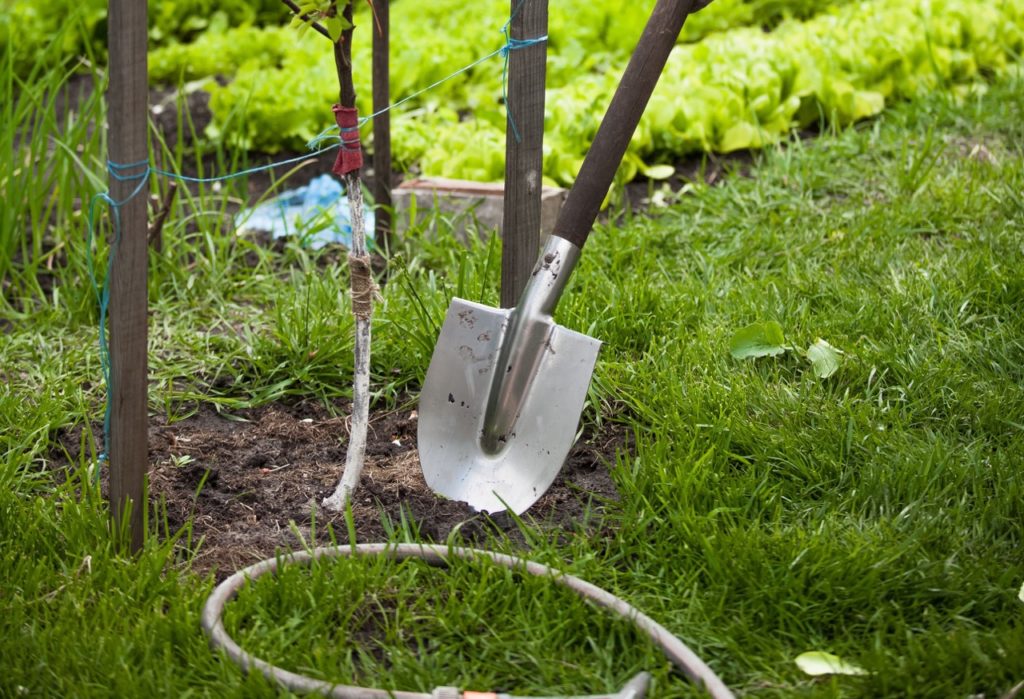
This will stimulate the growth of feeding roots.
Prune the tree lightly, only removing old or congested limbs and protruding branches that could be damaged in transit.
Do not prune more than a quarter of the growth.
2) Prepare The New Site
In February or March, a few days before you intend to transplant the tree, prepare the transplanting site.
Select a spot in the new location where the exposure and aspect are as close as possible to that of the tree’s present spot.
This should preferably be in a shaded position with some sun, as Julie Bellemann from Sheffield Fruit Trees explains:
“Taking your time to plant it correctly, in a place with sufficient levels of sun, is very important.”
Examine the soil that the tree is growing in and try to match, as far as possible, the soil of the transplanting site to that of the current spot.
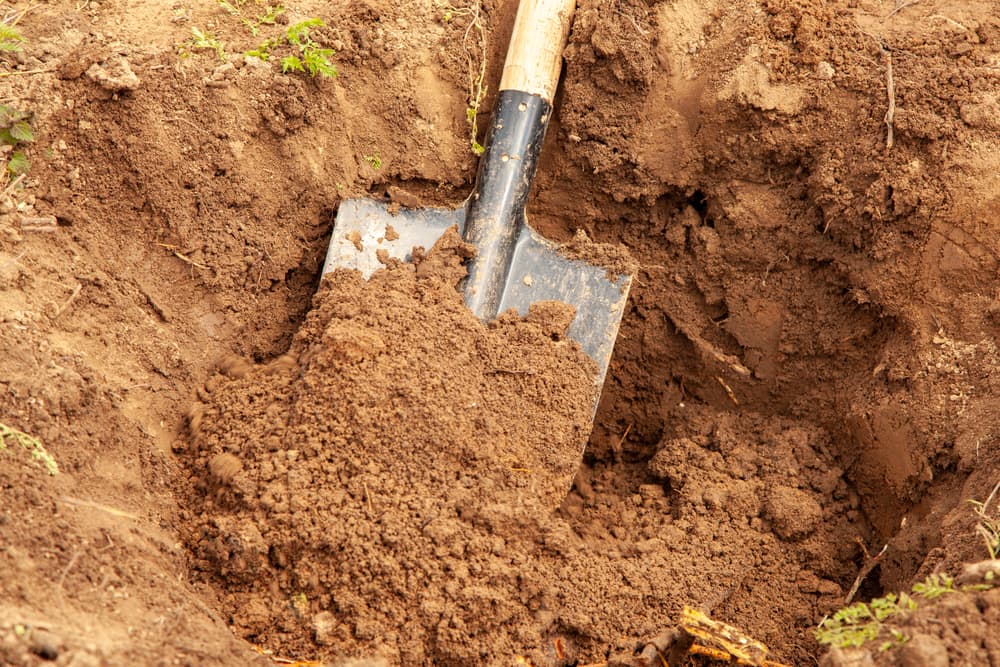
Also, prepare that same type of soil for backfilling the transplanting hole.
At the very least, the new site’s soil should not be too divergent from the current spot’s soil.
Thoroughly clear the site of all weeds, then dig a hole that is about 25% wider than the tree’s drip line and about 30cm deep.
Mix in a little of the new soil into the hole.
The day before the tree is to be dug up, water it well.
3) Remove The Tree
On a sunny morning in February or March, remove and transplant the tree, making sure you have time to complete this task in one day.
If necessary, mark the soil line at the base of the trunk, which can almost always be distinguished by a difference in colour.
It is critical to know where the soil line was at the time of transplanting.
Secure the branches by wrapping a few coils of natural-fibre rope around them, tying them loosely.
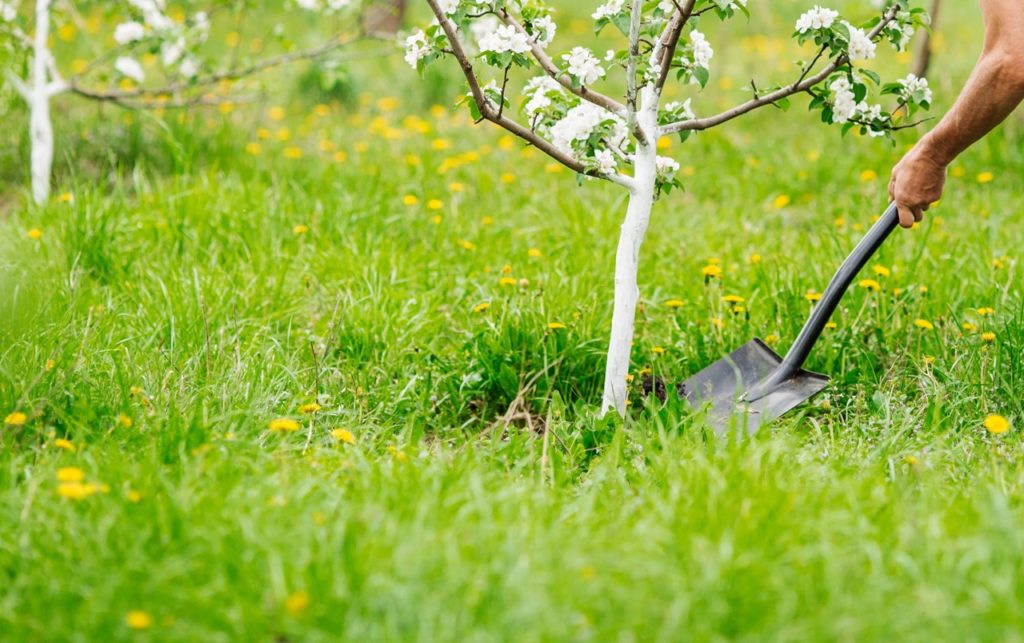
To dig up the tree, you should first probe the extent of its root system by digging around the canopy.
Adjust the width of the circle depending on whether or not you encounter roots as you dig deeper.
Although a little damage to the roots will be unavoidable, it is imperative to limit this to the bare minimum.
When the lower roots are freed, prise up the tree when it is tilted over while supporting it, taking care to keep as much of the root system intact as possible.
Wrap the roots loosely in a damp burlap or sackcloth and place the tree on similar material prior to transporting it to the new site.
4) Transplant And Backfill The Hole
Now that the tree’s root system can be observed, adjust the transplanting hole so that it is of the right depth and twice as wide as the root system.
Water the hole, including its sides and the surrounding ground.
Remove the wrapping material for the tree, spread out the roots and place it in the hole, making sure to spread out the roots once more.
Examine the set of the tree and adjust vertically as necessary so that the soil line and the surface of the ground will be level when the hole is backfilled.
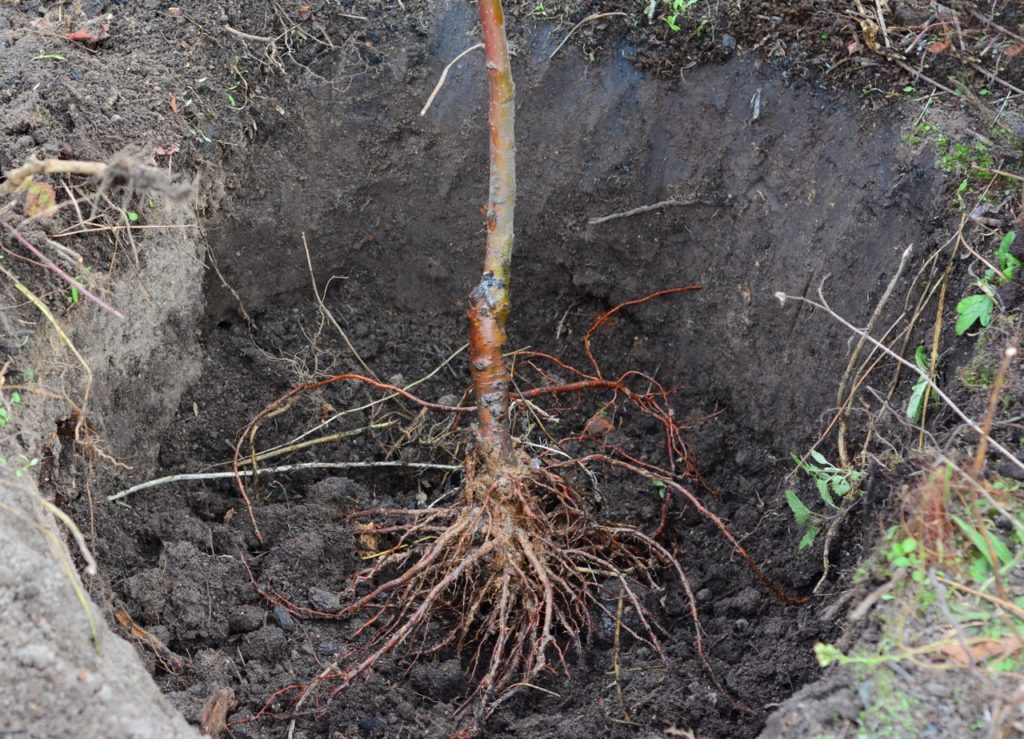
Start to backfill the hole.
As the hole is backfilled, keep watering in moderation to keep the soil moist.
Also, keep patting down and firming up the soil and try to ensure that there are no air pockets.
Backfill the hole up to the soil line at the base of the trunk.
You may backfill to a touch below the soil line but not higher than it.
“Keep an eye on the soil line for a few months,” says Master Horticulturist Colin Skelly.
“It is likely to drop as the compost settles in the planting hole.
“Top up the soil level using the same principles to avoid the tree sitting proud and exposing the top layer of roots.”
Firm up the soil well and give the tree a thorough watering.
5) Water And Apply Fertiliser
Apply an organic mulch (such as bark, leaves, hay or straw) around the tree at a distance of several centimetres from the base of the trunk.
Water the tree periodically.
“Make sure to give it sufficient water, particularly if it is a potted plant as they’ll require more care than a free-standing tree in the ground,” says Julie.
Though it certainly should not be watered as it would be in the growing season, it should be watered more than normal during dormancy, as water will assist in recovery from transplant shock.
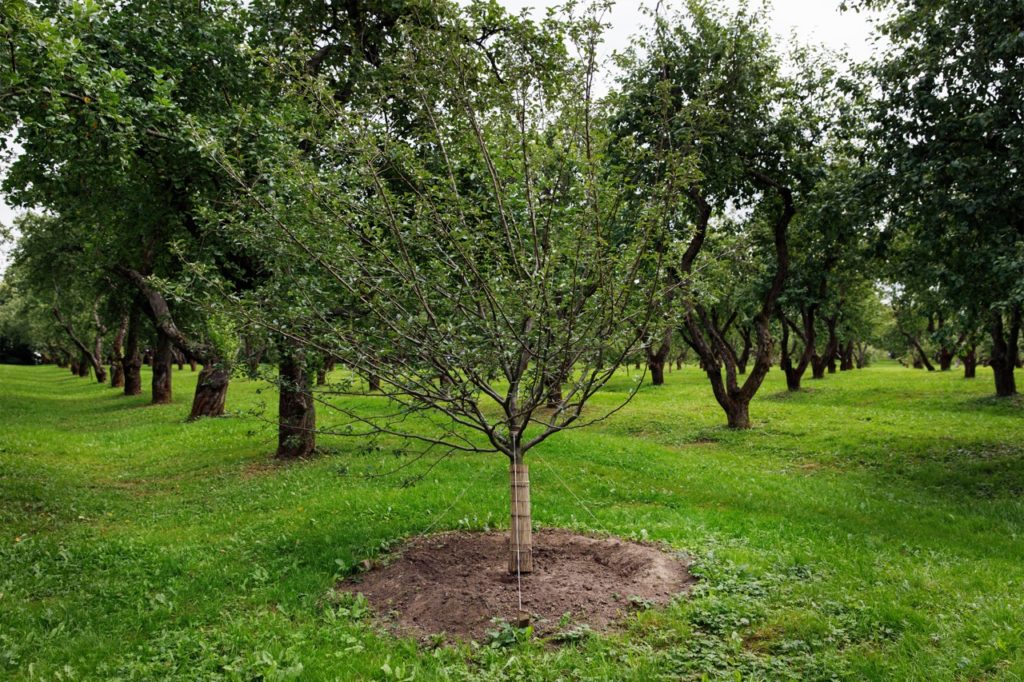
Give the tree a month or so to settle down.
Then, instead of your customary feeding, fertilise it with a high-phosphorous formula.
Apply a high-phosphorous fertiliser at 60-70% of the quantity and strength directed by the manufacturer for a fruit tree of that particular size and age.
Alternatively, work in a couple of pinches of bonemeal into the soil in a ring below the tree’s drip line.
Water in the fertiliser and then leave your transplanted tree to grow.

